While we are literally surrounded by increasingly realistic and complex Triple A games, with augmented reality and the many metaverse applications progressively making their way into our lives, it is impressive to go back to what today may seem the Stone Age. of videogame art, when at the center of our adventures there were characters and scenarios outlined through real masterpieces of pixel art. Works of ingenuity and imagination that continually challenged the concept of suspension of disbelief, with bodies and backdrops formed by pixels visible to the naked eye but sufficient to immerse ourselves with the heart and with the imagination in other suggestive and fantastic worlds. Our time machine today stops exactly 30 years ago, when Monkey Island 2: LeChuck’s Revenge arrived on the shelves of video game stores around the world: still the best graphic adventure ever.
Before focusing on analyzing this milestone of video games and storytelling and the adventures of the iconic Guybrush Threepwood, it is worth taking a step back to outline the context in which the genius Ron Gilbert started the Monkey Island series. Until the late 1980s, graphic adventures were basically textual (an example above all is the Zork series): the interactions of the protagonists of the stories with the surrounding landscape and with the non-player characters were guaranteed by a series of verbs (usually imperative) typed by the player through a simple command line interface. A technical limitation not even imaginable for the mentality with which we approach video games today, which however did not prevent the pioneers of graphic adventures from trying their hand at real hymns to the imagination, which are still part of the geek imagination today.
The boom of Lucas Arts
Just like it happened with Star Wars for commercial cinema, everything changes again George Lucas through his Lucasfilm Games, which later became LucasArts. Taking advantage of the success of the film Labyrinth – Where everything is possible, this newborn but ambitious videogame production house delivers Labyrinth to gamers all over the world, a graphic adventure for Apple II and Commodore 64 that constitutes an ideal bridge between cinema and videogames and between textual adventures. and all that will come after. What makes the difference is a small but substantial detail: in the second part of the game a system is introduced thanks to which it is possible to select the possible actions through the keyboard (the mouse was not yet available on all computers) and thus advance the story. .
Everything changes the following year, when Maniac Mansion, the first creature of Monkey Island’s father Ron Gilbert, is released, which introduces a fundamental novelty to the sector: the SCUMM graphics engine, which allows players to “point and click” (a phrase that has become then the emblem of an entire genre of games), that is to select actions, objects and characters with a special grid clickable with the mouse. This innovation allows the games to progress and give life to more complex and imaginative puzzles, which are accompanied by another very rare feature for the games of the time, namely irony.
A golden age of graphic adventure begins: within a few years, Zak McKracken and the Alien Mindbenders, Loom, Sam & Max Hit the Road, Indiana Jones and the last crusade, Indiana Jones and the fate of Atlantis, arrive. Day of the Tentacle and obviously the first two unsurpassed chapters of Monkey Island. Works that are not limited to entertaining, but establish a direct relationship with the player, with continuous breakthroughs of the fourth wall, situations between the paradoxical and the grotesque and hilarious dialogues.
The Secret of Monkey Island e Monkey Island 2: LeChuck’s Revenge
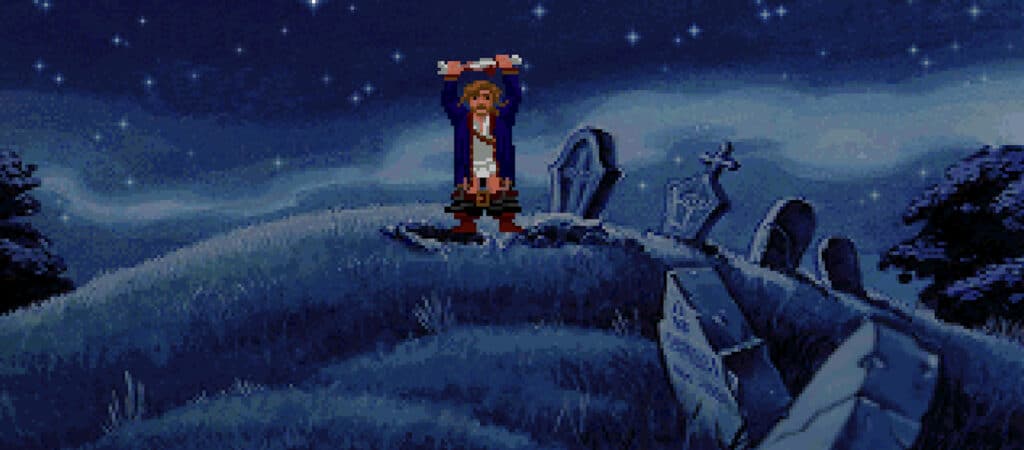
“My name is Guybrush Threepwood and I want to be a pirate.” In 1990’s The Secret of Monkey Island, one of the most memorable characters in videogame history is presented to the public. A real anti-hero, which his name already portrays as an ordinary person, devoid of particular qualities. In fact, Guybrush is nothing more than the fusion of the English word Guy (boy) with the extension of the files generated by the Deluxe Paint graphic editor (.brush). An ordinary guy who, in the golden age of piracy, goes to the fictional island of Mêlée Island, in the Caribbean, to fulfill his bizarre dream: to become a fearsome pirate.
With the help of Tim Schafer and Dave Grossman, Ron Gilbert blends his passion for the attraction of Disneyland Pirates of the Caribbean (which is also the basis of the film series of the same name) with the great tradition of pirate tales, mixing them with the interior of a cocktail made of extravagant objects (the famous rubber chicken with the pulley in the middle), explicit parodies of the vein (the insulting duels), voodoo tradition (well represented by the mysterious Voodoo Lady) and a desecrating humor, which is taken continually game of the spectator and the protagonist himself, an irresistible cocktail of ineptitude, superficiality and cunning.
Next to him, the inevitable villain (the ghost pirate LeChuck) and the evolution of the classic princess to be saved, that is the governor Elaine Marley, more similar to the impetuousness and bravado of Leia Organa than to the Peach of Super Mario. The result is a resounding success with audiences and critics, which leads to the development of the sequel Monkey Island 2: LeChuck’s Revenge, an extraordinary swan song of an entire creative team, which Ron Gilbert leaves immediately afterwards to focus on projects. more personal, leaving an unbridgeable void.
Monkey Island 2 and The Empire Strikes Back
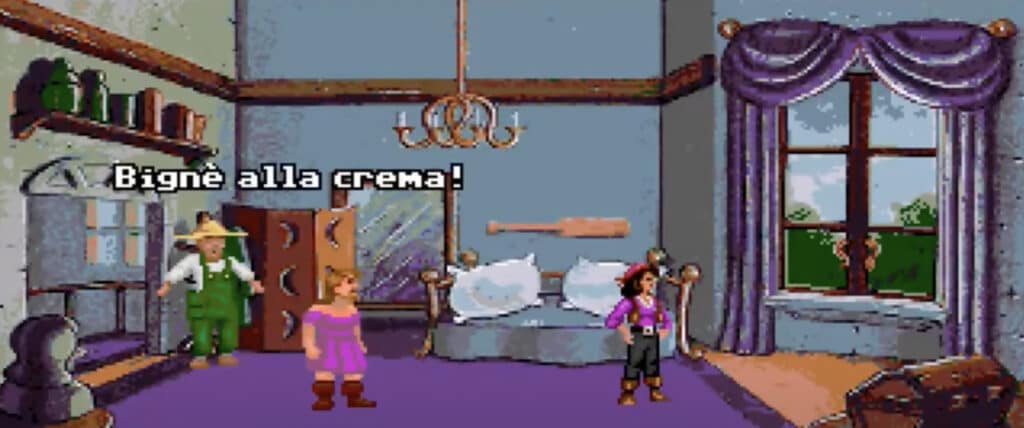
It is not an act of treason to define Monkey Island 2: LeChuck’s Revenge as the Empire Strikes Back in Guybrush Threepwood’s adventures. An editorial operation superfine, which preserves the spirit of the previous chapter by deepening the themes, the universe and the characters that revolve around the protagonist. The comparison with the second chapter of the Star Wars saga is not just a natural association between the sequels of two franchises belonging to the same person. Building on the success of their predecessor, Ron Gilbert and his team dare from many points of view, staging a more complex story from a narrative point of view (see the opening in medias res which kicks off a flashback and the final open, on which we will return), with darker and more macabre hues and more focused on family dynamics, which explode in the last part.
After the incipit that shows us Guybrush intent on recounting the events of the last days at the rediscovered Elaine, followed by a classic meeting in front of the fire in which the protagonist revels in his deeds, we find our antihero on Scabb Island, described as “a anarchist cooperative of pirates, cutthroats and other criminals; a shelter for scoundrels and rebels ». The wealth he accumulated after his epic victory over LeChuck did not last long, however, since Guybrush found on his way the fearsome Largo LaGrande, right arm of the famous ghost pirate who imposed an embargo on the whole island that prevents anyone to move outside of it.
With the entire population subjugated by this character, the solution to the problem is still in voodoo: with the precious support of the well-preserved Voodoo Lady, Guybrush begins to find the ingredients for a voodoo doll with which to defeat the terror of Scabb Island.
A world in constant evolution
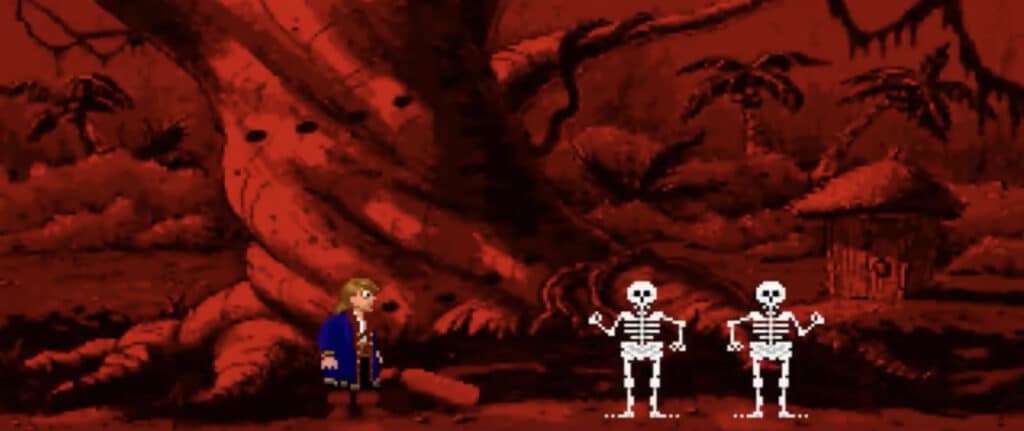
If the puzzles of the first chapter of the series seemed unsurpassed from the point of view of the imagination, those of Monkey Island 2 even manage to move the bar of difficulty a little further. Accompanied by the amazing music of the highly confirmed Michael Z. Land, we wander among swamps and cemeteries, between monocles to be stolen from their legitimate owners and absurd discussions with a carpenter (How much wood could a rodent gnaw if a rodent could gnaw wood?). The moment of Largo’s coveted defeat, however, coincides with a real restart of the story, since, in a similar way to L’Impero strikes again, the one we believed was the main villain turns out to be the second in the command line, to which we unwittingly serve on the silver platter an ingredient to resurrect the main antagonist, that is, the revived LeChuck.
Monkey Island 2 relaunches: two new islands to explore (Booty Island and Phatt Island), a spitting contest to win (obviously by deception), a treasure to be recovered at the bottom of the sea and the inevitable treasure to be recovered, that is Big Whoop, which legend has it is located on the island of Dinky Island, which can only be traced through the 4 pieces of an ancient map. There is really no pirate stereotype (there is also a drinking contest), but it is all staged with a derisive irony that makes a purely derivative story a totally original work, despite the repeated citations to Indiana Jones (the snakes , the dog with the protagonist’s name, the whip for sale in the antique shop), Casablanca (the dialogue between Guybrush and Elaine when they meet) and of course Star Wars.
The puzzles of Monkey Island 2
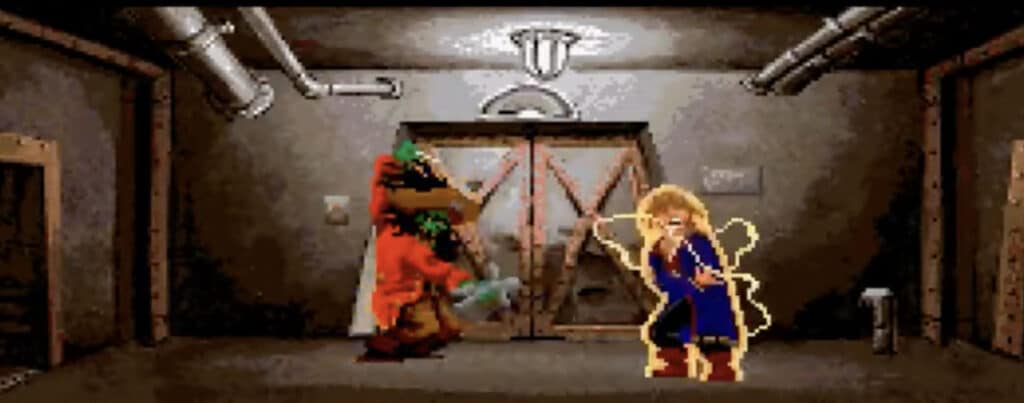
The evolution of the Monkey Island 2 universe also increases the difficulty of the game exponentially. Today we can get the solution of the whole story with a handful of clicks, but those who played this milestone of graphic adventures in the 90s will remember with a mixture of tenderness and shame the afternoons and nights spent looking for a solution to various puzzles created by Gilbert, with the help that was limited to word of mouth and magazines of the sector. An intrinsic difficulty of the game that transcends its very nature (“You can’t die in a LucasArts game”, Guybrush reminds us) and on which the authors themselves ironize, giving us a hilarious dialogue between the bewildered protagonist himself and the Hot Line of the production company, based on gags on the first two chapters of Monkey Island.
A perfect blend of game world design, respect for the player, unbridled fantasy and boundless humor, which neither recent remakes (so-called Special Editions) nor uninspired sequels have managed to replicate. Certainly the fault of the progressive brain drain from Lucas Arts, but also of an audience that over time has radically changed their habits, moving towards titles …






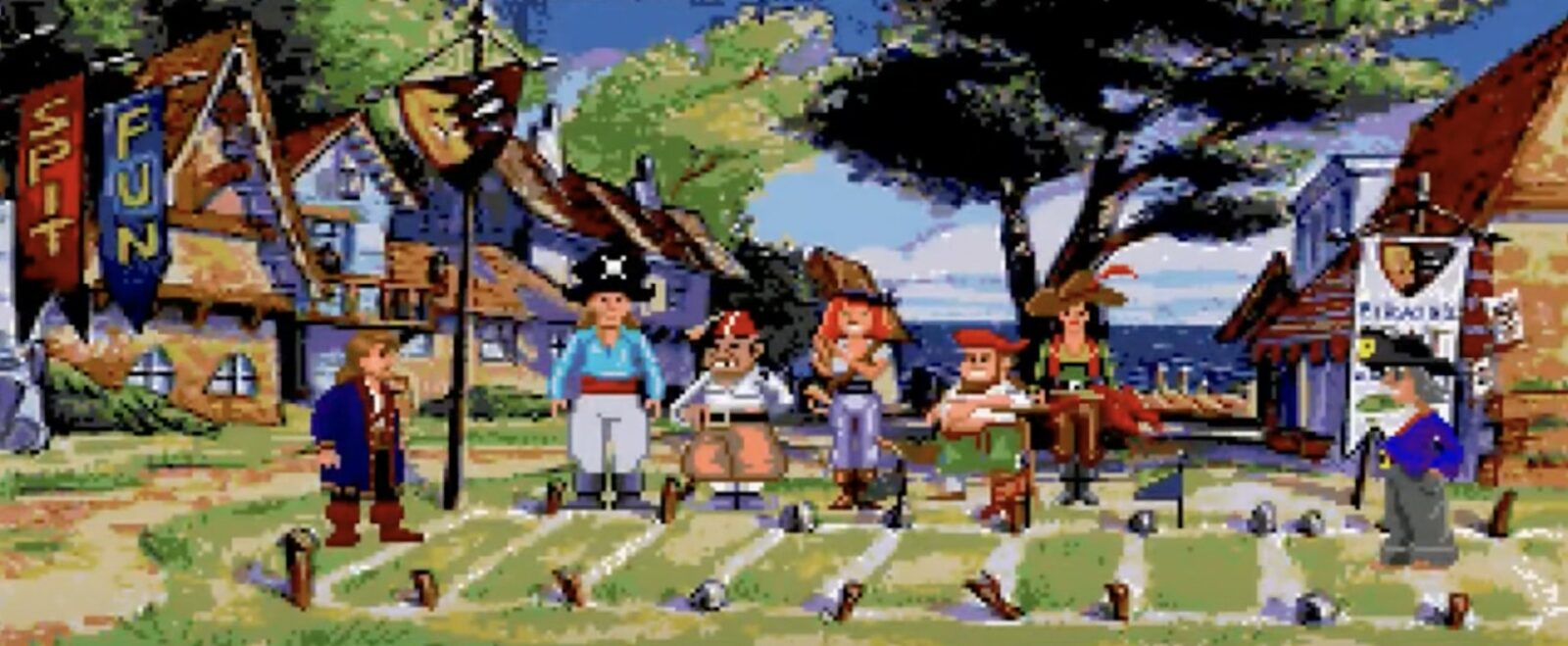





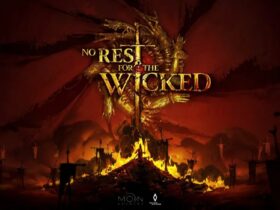
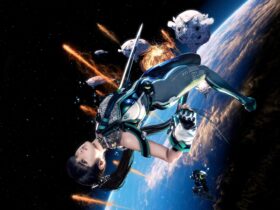
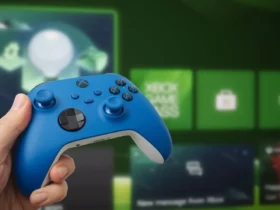
Leave a Reply
View Comments